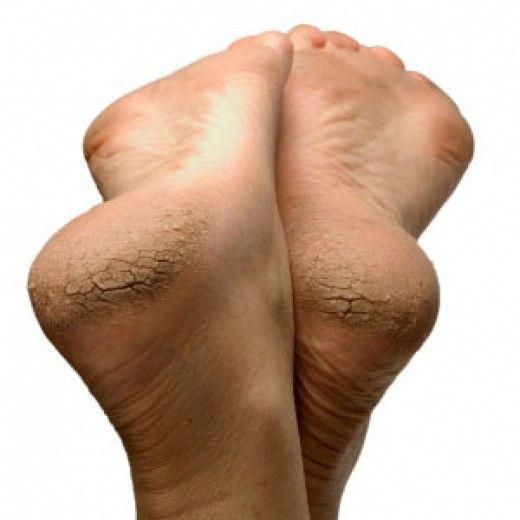Skin fissures are those areas where the skin becomes dried, cracked, and thickened. A person experiences cracks and cuts in the skin during this condition. Mostly the skin around the crack is thickened and calloused. Usually, it happens on dry areas of skin like the fingertips, heels, and between the toes.
Cause of Skin Fissures
The primary cause of skin fissures is usually dehydrated skin, also called xerosis. Fissures start as minor cuts, then they deepen and become very painful. Especially if you experience cracks on your heel, you may notice a callus form. That callus may be of dark brown or yellow.
Although they are small skin wounds, they put you at risk of developing an infection in the skin. Also, they can worsen and become skin ulcers if not appropriately treated by a reliable skin specialist. And this is especially risky for people with diabetes since it raises their risk for infection because of an open wound.
Typically, the first step in treating skin fissures is to prevent dryness. In addition, good moisturizing can help you in preventing their occurrence.
Why Do I Have Cracked Skin?
Cracked skin usually starts as dry skin. As the skin becomes calloused and thick with the passage of time, it loses its elasticity, and tiny cracks are formed. If a professional dermatologist does not treat these, they become deep and lead to bleeding and infection.
Mostly skin fissures are found on the skin under stress, like the heel of the foot. As it supports the body’s weight when pressure on the pads of the feet exerts, it can lead to the feet expanding sideways. That results in stretching the skin and causing cracks.
If you spend prolonged periods barefoot or wearing high-heeled shoes, you may be more at risk for heel cracks. In addition, some chronic skin conditions like psoriasis, diabetes, and eczema can change your skin’s hydration and increase your risk of fissures. Sometimes eczema, combined with over-washing your hands, can cause cracked skin. Ultimately, you will have to get yourself checked by an experienced skin specialist.
- Environmental Causes
Some environmental conditions can also be the cause of skin fissures like
Weather: People living in a dry and cold climate can have more chances of skin fissures.
Overuse: Any area of skin continually used or washed is at a higher risk of becoming dry and getting skin fissures.
Water exposure: Frequent exposure to water, such as handwashing or any other work having contact with water, can dry out your skin and raise your risk of experiencing eczema and cracking.
Nutritional deficiencies: Sometimes, Vitamin deficiencies can cause dry, itchy skin that does not heal as quickly as healthy skin.
- Medical Causes
Some medical reasons for skin fissures that immediately need a doctor’s and dermatologist’s consultation include the following:
Diabetes: People with diabetes are at higher risk of developing cracks and skin fissures. If someone has been diagnosed with nerve damage in the feet due to diabetes, he may be more likely to experience skin dryness and heel cracks that could lead to fissures.
Psoriasis: It is an autoimmune condition that forms thick plaques of dead skin cells. Most of these plaques are very dry and cause cracking and skin fissures.
Eczema: During the condition of eczema, itchy, dry patches of skin are formed that may become inflamed as well. These dry patches then become cracks and fissures.
Symptoms of Skin Fissures
The main symptoms of skin fissures include the following:
- Small cuts or cracks in the skin
- The skin often appears yellow or dark brown
- The skin feels thick and calloused.
- Pain
- Itching
- Sometimes bleeding
- Some Early signs include redness and scaly, dry skin
- Fissures can make walking and bearing weight painful.
So, you must get yourself treated by a reliable skin specialist as soon as possible.
Home Remedies
These home remedies can work for fissures to some extent
- Humectants
- Occlusive
- Emollients
- Olive oil
- Coconut oil
- Avocado oil
- Oat oil
- Avocado oil
- Honey
- Aloe vera
In addition, you can prevent fissures by moisturizing regularly and using a high-quality moisturizer free of artificial dyes and fragrances.
When to See a Dermatologist for Skin Fissures?
Many skin fissures can be treated at home if you take care of them well. But when you see home remedies are not working, you should visit a skin specialist soon.
If you do not see any improvement after moisturizing your skin twice a day, then take an appointment with your consultant. He will prescribe any ointment which can moisturize and heal your skin.
In addition, consulting a dermatologist is a must when your skin fissures are bleeding, or you have any infection. If your skin fissures have open sores that have become so deep that your skin is bleeding, then consult your doctor for a prescription treatment.
Moreover, you should visit a skin specialist if you see any signs of infection like swelling, redness, and pus from the fissures.
Summary
Dry and cracked patches of skin that thicken over time are called skin fissures. In this condition, the skin becomes too dry and loses its elasticity. Cracks are also formed.
Mostly skin fissures are found on your heels, fingertips, and between your toes. If you spend a lot of time walking around barefoot or in high heels, you may be at a higher risk of developing skin fissures.
Keeping your skin moisturized is the best way to prevent and treat skin fissures. But keep noticing that if your skin fissures do not improve and any infection develops in your cuts, then immediately visit a dermatologist.

